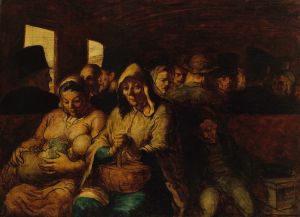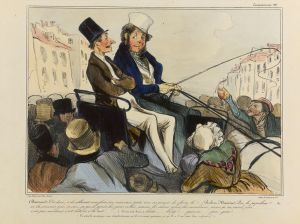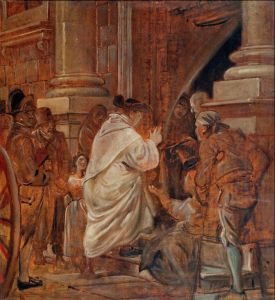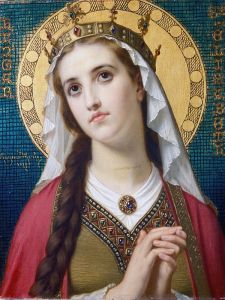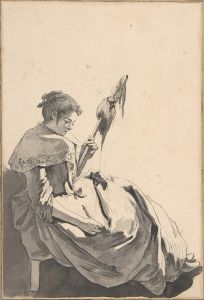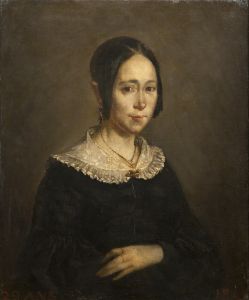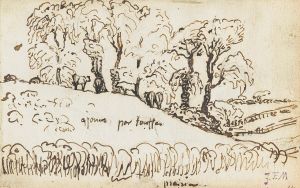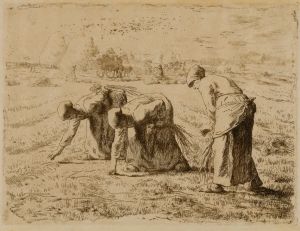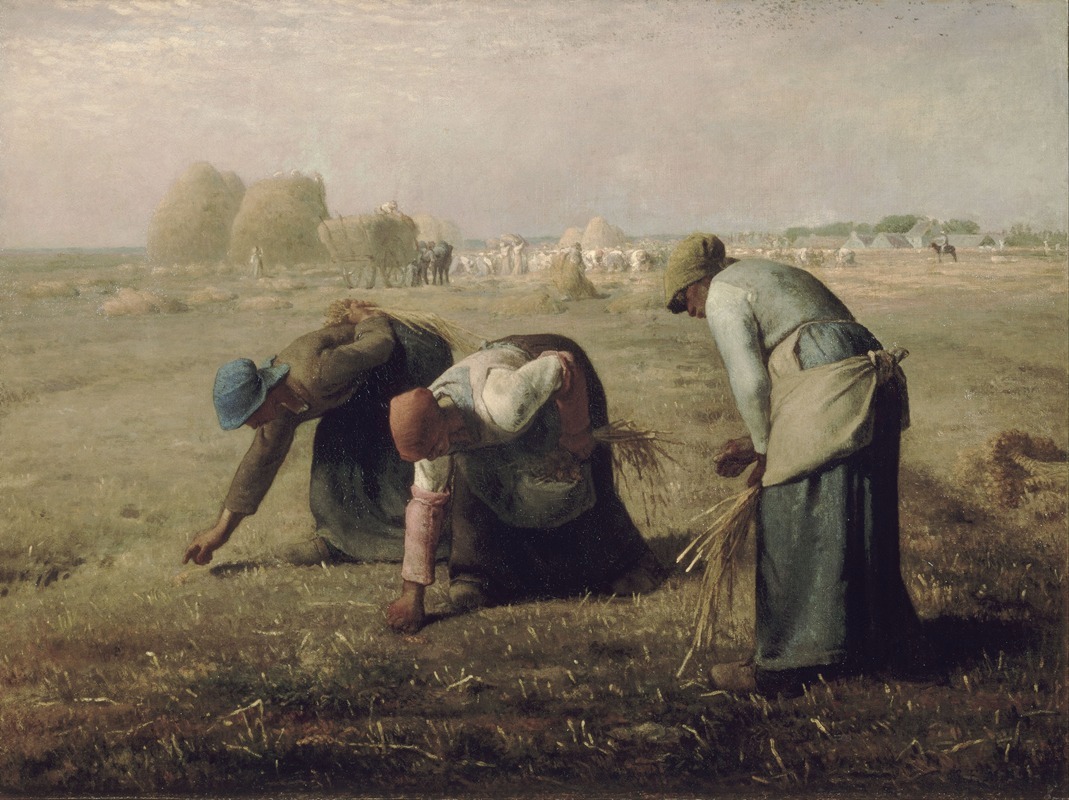
Gleaners
A hand-painted replica of Jean-François Millet’s masterpiece Gleaners, meticulously crafted by professional artists to capture the true essence of the original. Each piece is created with museum-quality canvas and rare mineral pigments, carefully painted by experienced artists with delicate brushstrokes and rich, layered colors to perfectly recreate the texture of the original artwork. Unlike machine-printed reproductions, this hand-painted version brings the painting to life, infused with the artist’s emotions and skill in every stroke. Whether for personal collection or home decoration, it instantly elevates the artistic atmosphere of any space.
"The Gleaners" is an iconic oil painting created by the French artist Jean-François Millet in 1857. This work is one of Millet's most famous pieces and is a quintessential example of the Realism movement in art, which sought to depict everyday life and ordinary people with honesty and without romanticization.
The painting measures 33 inches by 44 inches (83.5 cm by 110 cm) and is housed in the Musée d'Orsay in Paris, France. "The Gleaners" portrays three peasant women gleaning a field of stray stalks of wheat after the harvest. Gleaning was a common practice among rural poor in the 19th century, where they would collect leftover crops from farmers' fields after the main harvest. This activity was often a means of survival for the impoverished.
Millet's depiction of the women is both powerful and poignant. The figures are bent over, focused on their task, and their faces are not visible, emphasizing the anonymity and universality of their labor. The composition of the painting draws the viewer's eye to the women in the foreground, while the background shows a vast field with other workers and a cart, suggesting the scale of the agricultural landscape.
The painting is notable for its use of light and color. Millet employs a warm, earthy palette that reflects the natural environment and the time of day, likely late afternoon, as suggested by the long shadows. The lighting highlights the physicality and toil of the women's work, casting them in a dignified light despite their humble task.
When "The Gleaners" was first exhibited at the Salon in 1857, it received mixed reviews. Some critics praised Millet's technical skill and the painting's composition, while others criticized it for its subject matter. At the time, the depiction of rural poverty was controversial, as it challenged the idealized portrayals of rural life that were popular in art. The painting was seen by some as a political statement, highlighting the harsh realities faced by the rural poor in France during the 19th century.
Despite the initial controversy, "The Gleaners" has since become one of Millet's most celebrated works and is considered a masterpiece of Realism. It has been interpreted as a commentary on social justice and the dignity of labor, resonating with audiences for its empathetic portrayal of the working class.
Millet's work had a significant influence on later artists, including Vincent van Gogh, who admired Millet's ability to capture the essence of rural life. "The Gleaners" continues to be studied and appreciated for its artistic merit and its social and historical significance, offering a window into the lives of 19th-century French peasants and the broader socio-economic context of the time.





